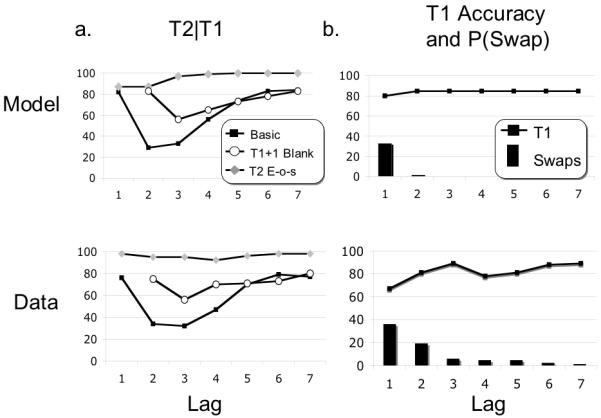Figure 11.

Simulation results alongside empirical counterparts from subjects. Shown are accuracy of T2 conditional on T1 and accuracy of T1 and the probability of reversing temporal order (i.e. P(swap)). The model demonstrates a basic blink that is attenuated by blanks either at T1+1 or by placing T2 at the end of the stream (a). It also demonstrates a reduction in T1 performance that is exclusive to lag 1, as well as a large increase in swap errors (b). All human data are taken from Chun and Potter (1995) except for the T2 end-of-stream data, which are from Giesbrecht and DiLollo (1998).
